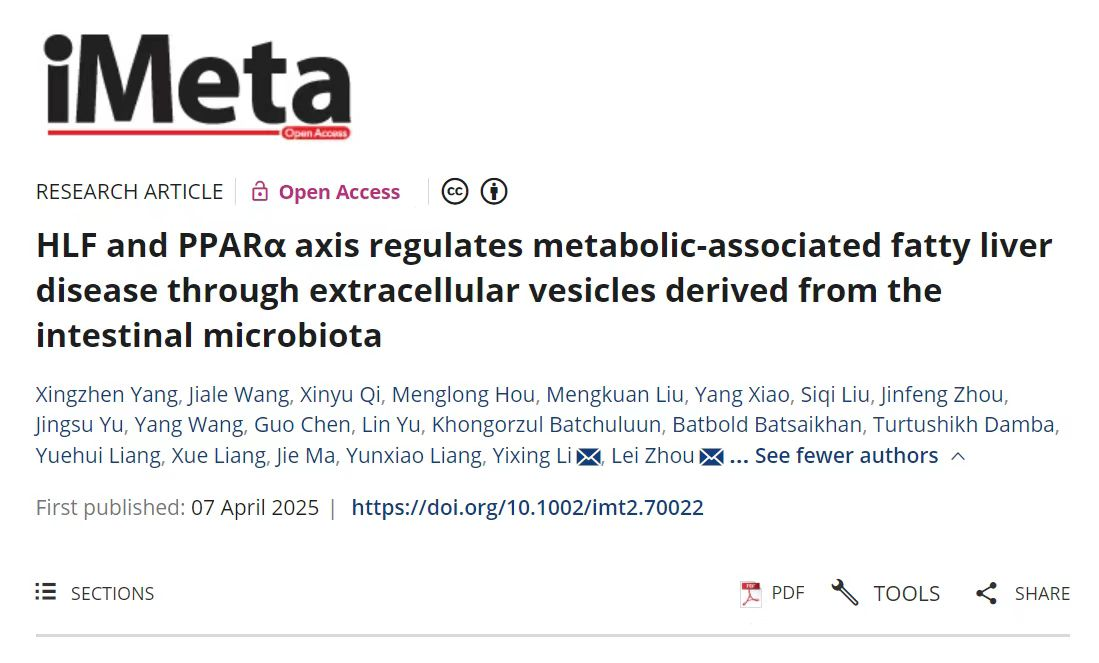Recently, a research team led by Professor Li Yixing from the School of Animal Science and Technology has achieved new progress in lipid metabolism research. Their findings, titled "HLF and PPARα axis regulates metabolic-associated fatty liver disease through extracellular vesicles derived from the intestinal microbiota", were published in the internationally renowned journal iMeta. The first author of the paper is Yang Xingzhen, a master's student from the school. The corresponding authors are Professor Li Yixing and Professor Zhou Lei. Professor Zhou Lei is from the People’s Hospital of Guangxi Zhuang Autonomous Region (Guangxi Academy of Medical Sciences). GXU is the primary affiliation for this research, with Mongolian National University of Medical Sciences serving as a collaborative partner.

In animal husbandry production, metabolic disorders such as obesity and fatty liver, driven by lipid metabolism disorders, severely impact livestock and poultry health, particularly in pregnant livestock and laying hens. Fatty liver causes hepatocyte damage and even hemorrhagic necrosis, compromising animal health and productivity. The intestine is the main site for the digestion and absorption of exogenous fat, and the gut-liver axis plays an important role in the balance of body fat metabolism. The intestinal microbiota is the key to the gut-liver interactions. Dysbiosis of intestinal microbiota is closely linked to fatty liver development in livestock and poultry. Regulating it through biotechnological means can be effective for the prevention and treatment of fatty liver. However, the mechanisms underlying gut-liver axis regulation of liver lipid metabolism still require further exploration.
The team reported, for the first time, the molecular mechanism by which the hepatic leukemia factor (HLF) in the intestine regulates liver lipid metabolism. Their study demonstrated that the HLF/PPARα axis modulates the gut-liver axis and inhibits ferroptosis of liver cells through extracellular vesicles (fEVs) derived from the intestinal microbiota, thus reducing liver fat accumulation and alleviating fatty liver. Notably, taurochenodeoxycholic acid (TCDCA), a conjugated bile acid, is the key molecule for fEVs to play a role in reducing fat. These findings reveal a new mechanism by which HLF regulates the gut-liver axis and affects lipid metabolism, providing a low-cost, safe, and efficient therapeutic strategy for related diseases. The research also offers theoretical support for the precise regulation of nutrient metabolism in livestock and poultry and the development of new feed additives.

The Influence of Intestinal-Specific Knockout of HLF on Lipid Metabolism
The research team acknowledged funding support from the National Key Research and Development Program, the National Natural Science Foundation of China, the Guangxi Key Research and Development Program, and the Guangxi Natural Science Foundation. In recent years, the team led by Professor Li Yixing has been committed to the research on lipid metabolism and its regulation, and a series of research findings have been published in internationally renowned journals such as iMeta, Microbiome, and Redox Biology.